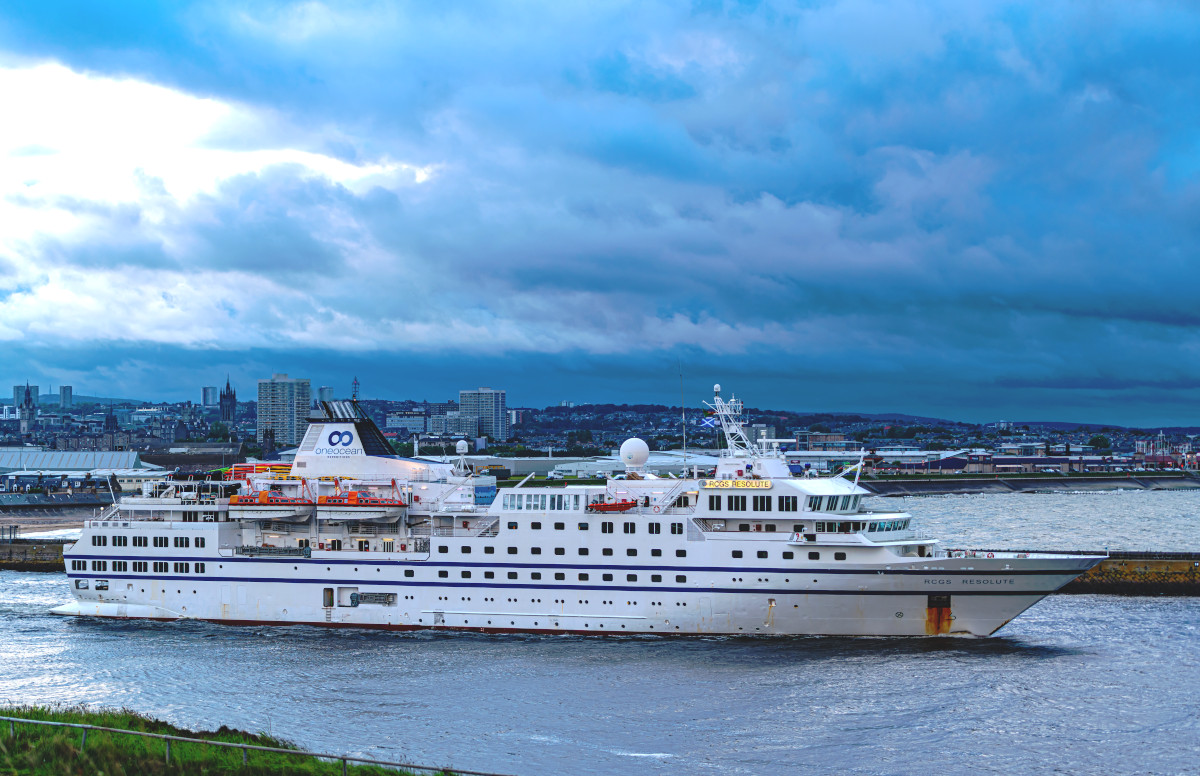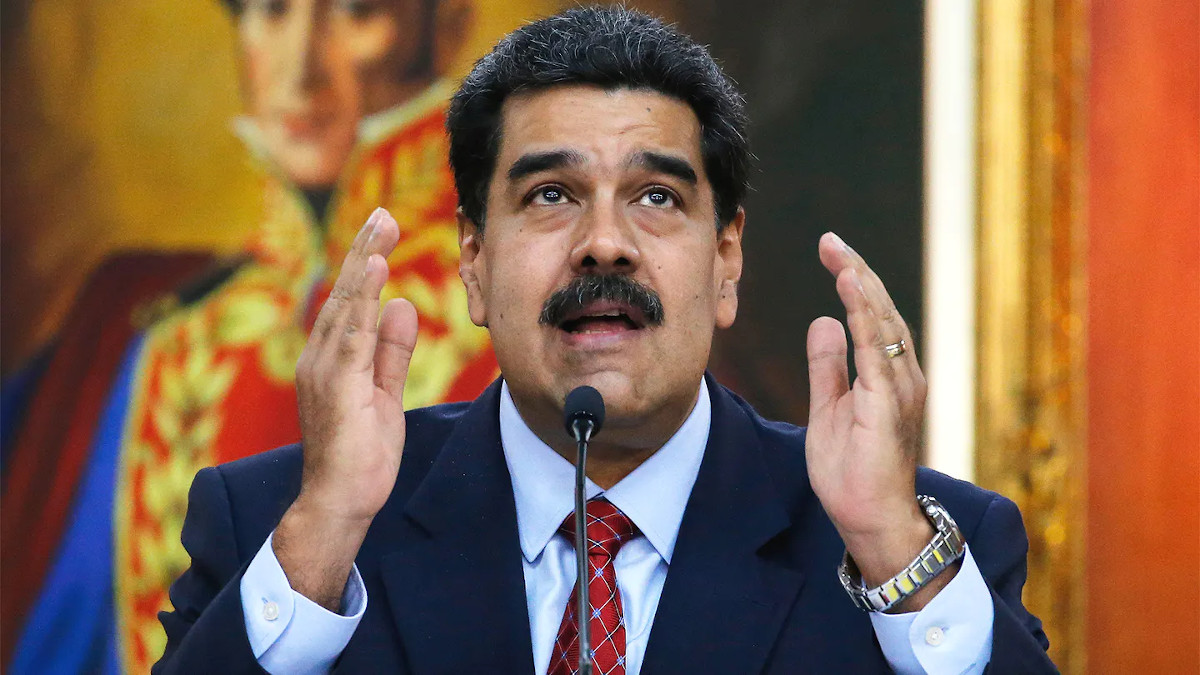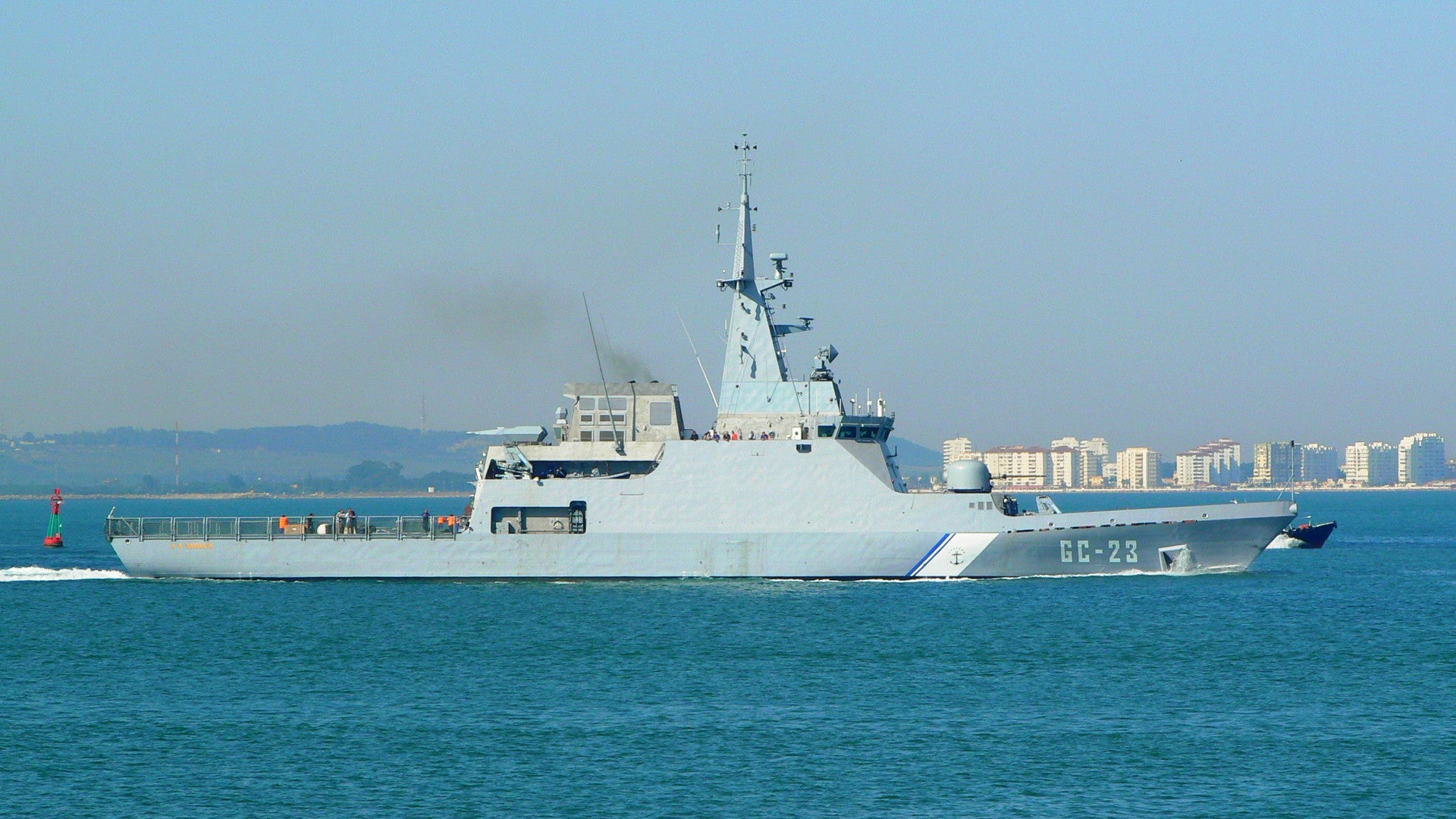In what sounds like it could be an April Fools joke, a Venezuelan Navy offshore patrol vessel recently sank after ramming a cruise liner in the Caribbean Sea. The cruise ship, which had no passengers on board at the time and has a reinforced hull to sail through ice-filled waters, suffered only minimal damage in what the operating company, Columbia Cruise Services, has called an “act of aggression … in international waters.”
The incident occurred in the early hours of Mar. 30, 2020, but Columbia Cruise Services only released an official statement on Apr. 1. The company, which is headquartered in Germany, said the RCGS Resolute was drifting just over 13 miles off the coast of Isla La Tortuga, a Venezuelan island situated some 60 miles off the country’s northern coast, when ANBV Naiguatá, also known by its hull number GC-23, approached it. The Venezuelan Navy ship ordered the cruise ship to follow it to Puerto Moreno on Isla De Margarita, located to the east, accusing it of violating the country’s territorial waters.
“When the event occurred, the cruise vessel RCGS Resolute has already been drifting for one day off the coast of the island to conduct some routine engine maintenance on its idle voyage to its destination, Willemstad/Curaçao,” the statement from Columbia Cruise Services says. “Shortly after mid-night, the cruise vessel was approached by an armed Venezuelan navy vessel, which via radio questioning [sic] the intentions of the RCGS Resolute’s presence.”
The 403-foot-long Resolute, which is flagged in Portugal, reportedly had a gross tonnage of around 8,445 tons at the time. The ship was laid down in September 1990 and completed in June 1991. Intended for Antarctic cruises, it has a reinforced ice-capable hull.

The Naiguatá, which is just over 262 feet long, is a Guaicamacuto class offshore patrol vessel and displaces around 1,720 tons with a full load. Naiguatá is the third ship in the class and entered service in 2011.
Spanish shipbuilder Navantia designed and built all of the Guaicamacuto class ships and had been working on a fourth one, named Comandante Eterno Hugo Chávez, which translates to Eternal Commander Hugo Chavez. The shipbuilding firm halted work on this last ship, which was named after the late Venezuelan leader Hugo Chavez, after Venezuela descended into a major, and still ongoing, political crisis in January 2019.

“While the Master was in contact with the head office [in Germany], gun shots were fired and, shortly thereafter, the navy vessel approached the starboard side at speed with an angle of 135° and purposely collided with the RCGS Resolute,” the statement continued. “The navy vessel continued to ram the starboard bow in an apparent attempt to turn the ship’s head towards Venezuelan territorial waters.”
Columbia Cruise Services does not say what kind of gun was fired or if it did any damage to the Resolute. The Naiguatá has a 76mm main gun in a turret forward of the main superstructure, as well as a pair of 20mm cannons and two .50 caliber machine guns. The crew would also have access to various small arms.
Whatever the case, the steel-hulled patrol ship suffered severe damage from repeatedly ramming the cruise ship, began to take on water, and ultimately sank. Columbia Cruise Services says Resolute remained in the area until it was clear its services were not required to help in the rescue of the 44 crew members. It then continued on, as planned, to the Port of Willemstad in Curaçao.
Venezuelan authorities have disputed this version of events, claiming Resolute “in a cowardly and criminal manner fled collision site and didn’t try to rescue the crew of sinking ship.” Venezuelan Minister of Defense Vladimir Padrino also described the cruise ship’s actions as an “act of imperial aggression” and “piracy.”
The exact circumstances that led to the incident remain murky. If the Resolute was drifting as the crew performed work on board, it may well have found its way into Venezuelan national waters, as the country’s authorities allege. It’s hard to see how an inadvertent crossing of the boundary would have been enough cause to board and seize the ship under established norms. Even if the cruise liner had deliberately sailed within 12 miles of Isla La Tortuga, it very likely would have been legally entitled to do so under the right of innocent passage, unless Venezuelan officials believe the ship of conducting some other prohibited activity.

Of course, this would not be the first time a country has seized, or attempted to seize, a commercial ship to exert its own pressure on its international opponents. Iran infamously took control of a British-flagged oil tanker in July 2019 in part in an effort to get the United Kingdom to release an Iranian supertanker it had impounded.
Venezuela’s dictatorial current President, Nicolas Maduro, has been locked in a major political dispute with opposition groups since January 2019. The country had already been in the grips of a serious economic crisis for years.
However, Maduro remains in power despite international pressure, especially from the United States, pushing him to leave office and allow for a transition to a new government. On Mar. 26, the U.S. Department of Justice unsealed indictments against the Venezuelan President, as well as 13 other officials and other individuals in that country, on drug trafficking charges. The U.S. State Department subsequently announced a $15 million reward for information leading to the arrest or conviction of Maduro.
The incident involving the Resolute may be linked to Portugal, where the Resolute is flagged, the government of which is in the midst of its own set of disputes with Venezuela. Despite acknowledging that Maduro is the de facto head of state, the Iberian country has recognized his principal opponent, Juan Guaido, as the country’s legitimate leader.

In February 2020, Venezuela accused Guaido, along with his uncle, of flying from Portugal on that country’s flag carrier TAP while carrying explosives in their luggage. It later accused TAP of conspiring with both men to smuggling the explosives into Venezuela. Portuguese Foreign Minister Augusto Santos Silva responded to these allegations by saying they “made no sense.”
Venezuela responded by barring TAP from flying to Venezuela for 90 days. It also accuses Portuguese banks of holding a “large part of Venezuela’s stolen money,” referring to frozen assets belonging to the Venezuelan government. This crisis has become somewhat moot as the COVID-19 pandemic has swept across the world, including both Portugal and Venezuela, which has led to a massive drop in global air travel.
Regardless of the exact circumstances, the Venezuelan Navy’s attempt to seize the cruise ship has certainly backfired in the immediate term. The Resolute is safely in port and the country has now lost a third of its Guaicamacuto class patrol ship fleet.
Contact the author: joe@thedrive.com
